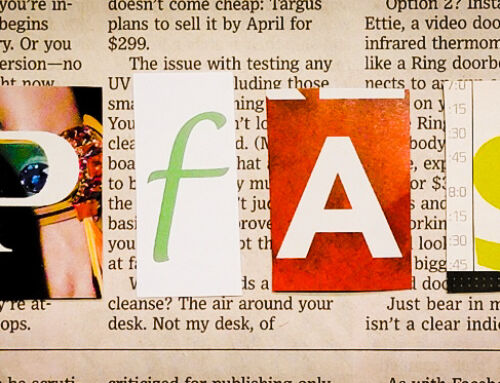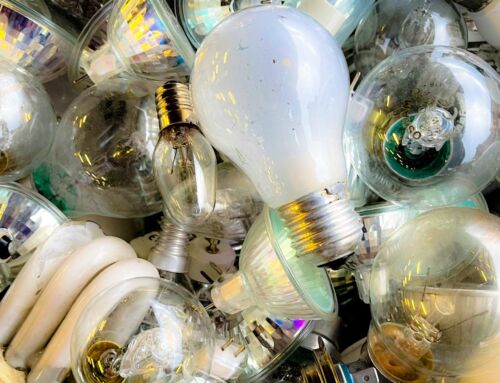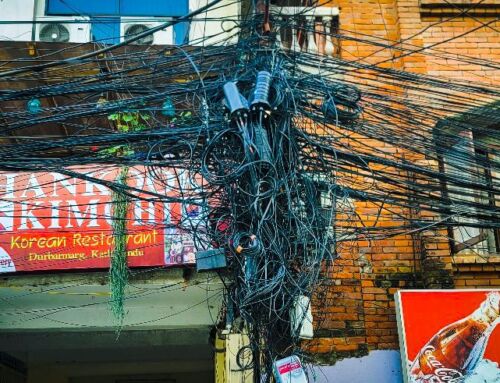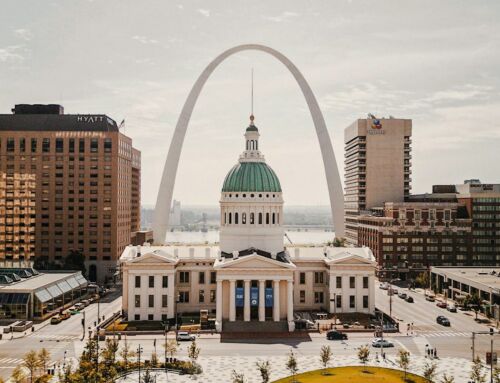View by Topic
Recent Articles
-
EPA Designates PFOA and PFOS as Hazardous Substances under Superfund LawSaturday, April 20th, 2024
-
Federal Government Finalizes New Efficiency Standards for LightbulbsSaturday, April 13th, 2024
-
2024 IECC is Final After Addressing Preemption IssuesSaturday, April 6th, 2024
-
Settlement Portends Broad Failure in Attempts to Ban Natural GasSaturday, March 30th, 2024
-
SEC Climate Disclosure Rule Stay and Venue Now in the 8th CircuitSaturday, March 23rd, 2024
View by Month/Year
“Green Building Law Update” Headlines
Recent Articles & News from
Stuart Kaplow’s blog
at GreenBuildingLawUpdate.com
- EPA Takes Action: PFOA and PFOS Now Hazardous Substances Under Superfund Law April 21, 2024
- Shedding Light on the Future: The Evolution of Lightbulbs in the Wake of New Energy Efficiency Standards April 14, 2024
- 2024 International Energy Conservation Code is Final After Addressing Preemption April 7, 2024
- Settlement Portends Broad Failure in Attempts to Ban Natural Gas March 31, 2024
Subscribe to the Green Building Law Update!
Stuart Kaplow brings his expertise and extensive experience to the table with his unique digital publication, "Green Building Law Update". Subscribers receive regular updates to keep them informed about important issues surrounding Environmental Law, Green Building & Real Estate Law, as well as the emerging demand for Environmental Social Governance (ESG).
Get fresh content through the lense of Stuart Kaplow's cutting-edge expertise, innovative commentary and insider perspective. Don't miss another issue! Subscribe below.
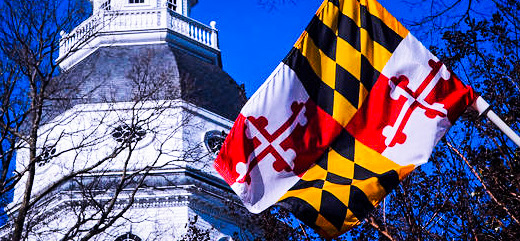
New Environmental Laws from the 2016 Session of the Maryland Legislature
During the 436th session of the Maryland General Assembly, legislators introduced 2,817 bills and by midnight on sine die, April 11, 2016 the legislature had passed 834 of those bills. There was legislation on ignition locks for drunk drivers, on police accountability, and even on changing the State song. This was not a very green year. Only a very modest number of those bills advance green building or sustainability.
Despite only nascent interest by state elected officials in embracing any of the environmental issues of the day and the green building industry being all but absent from policy making this year, savvy players in the environmental industrial complex will find business opportunities to lead and profit in matters of green building and sustainability, including opportunities advantaged by these newly enacted laws.
But make no mistake, in 2016 Maryland ranks #2 in the nation for LEED project activity per capita. That is, relative to its population, Maryland has more LEED projects 48 other states. Any review of newly enacted legislation must be considered against that backdrop.
The determination of what is an environmental bill is, admittedly, subjective and for the purposes of compilation a wide net was cast. That said, limitations of space do not permit this compilation to consider the many bills that did not pass.
The General Assembly will reconvene on Wednesday, January 11, 2017. Until then the new environmental laws that present business opportunities include:
The Greenhouse Gas Reduction Act of 2009 required the State to develop plans, adopt regulations, and implement programs to reduce greenhouse gas emissions by 25% from 2006 levels by 2020. The 25% by 2020 emissions reduction requirement was set to terminate December 31, 2016, unless reauthorized by legislation. The report, the 2015 Greenhouse Gas Emissions Reduction Act Plan Update, indicated that although Maryland is on target to exceed the required 25% emissions reduction by 3.71 million metric tons of carbon dioxide-equivalent, more reductions will be needed to minimize the impacts of climate change. Senate Bill 323 repeals the termination date of the current requirement to reduce GHG emissions by 25% from 2006 levels by 2020 and establishes a new reduction requirement, requiring the State to develop plans, adopt regulations, and implement programs to reduce GHG emissions by 40% from 2006 levels by 2030. This 2030 reduction requirement terminates December 31, 2023. The Maryland Department of the Environment must submit its proposed 2030 GHG emissions reduction plan to the Governor and the General Assembly by December 31, 2018.
Maryland’s Renewable Energy Portfolio Standard was originally enacted in 2004 to advance and support renewable sources of energy. House Bill 1106 proposed to increase the annual percentage requirements for meeting the Renewable Energy Portfolio Standard from the current 20% by 2022 to be 25% by 2020. On May 27, 2016 Governor Hogan announced he was vetoing House Bill 1106. The legislation was characterized as a regressive “tax increase” to be levied upon every electricity ratepayer in Maryland. Arguably, House Bill 1106 would impose higher electric prices of between $49 million to $196 million by 2020 to fund the proposed increase in the State’s Renewable Energy Portfolio Standard. The aim of House Bill 1106, to increase renewable energy is laudable, but the dramatic increase in dollar costs to Maryland ratepayers for electricity, including burdening the poor that use that electricity for heat and light, while benefitting investors in the solar industry, was widely seen as the wrong approach. Maryland ratepayers already were assessed over $104 million dollars for renewable energy credits in 2014 (the last year for which data is available). House Bill 1106 would have imposed an additional burden on ratepayers each year. Forecasting precise Renewable Energy Portfolio Standard prices is difficult, as the markets for them are influenced by multiple factors, including technology costs, labor costs, permitting costs, electricity costs, capacity market prices, potential future environmental regulations, and federal and state tax policies, but this bill would have nearly doubled year 2014 costs. Without this now vetoed bill, under existing law, Maryland will retain its status as a national leader in achieving Renewable Energy Portfolio goals. In 2016, suppliers must demonstrate they have accumulated RECs at a percentage of 15.9 of their total electric supply into Maryland. This includes 12.7% for Tier I renewables, 0.7% for Tier I solar, and 2.5% for Tier 2 hydroelectric. The current goal is for Maryland to reach 20% by 2020 with the inclusion of standards for solar (at least 2%) and offshore wind (no more than 2.5%) by 2022. Vetoing House Bill 1106 is key in a national dialogue about energy policy.
In 2009 the General Assembly authorized Property Assessed Clean Energy (PACE) programs where payments are made through a property owner’s property tax bill and provide a property owner the benefit of being able to finance costly clean energy improvements over time with the obligation for the financing payments be tied to the property rather than the property owner. As of the date of introduction of this bill in 2016, no PACE loans have yet been made in Maryland, but a county or municipality is authorized to enact an ordinance or a resolution establishing a clean energy loan program to provide loans to: residential property owners, including low-income residential property owners, to finance energy efficiency and renewable energy projects; and commercial property owners, to finance energy efficiency projects and renewable energy projects but only renewable energy projects with an electric generating capacity of not more than 100 kilowatts. Senate Bill 173/House Bill 105 remove the limit on electric generating capacity on renewable energy projects financed by commercial PACE program.
Senate Bill 912/House Bill 387 require the Maryland Clean Energy Center conduct a study to determine strategies for the optimal design and implementation for a residential clean energy loan program in the State. The study must include consideration of whether the strategies will work advantageously with loans made by private lenders for residential energy efficiency and renewable energy projects. MCEC must consult with specified entities when conducting the study, including the Maryland Energy Administration and the Maryland Association of Counties, among others. By October 1, 2016, MCEC must report to the General Assembly the findings of the study and any recommended policy actions to implement a residential clean energy loan program.
Under Senate Bill 876/House Bill 870, subject to available funding, the Department of Natural Resources is authorized to implement a Black Fly Management And Control Program to control the spread of black flies in the State, in conjunction with the Maryland Department of Agriculture and the University of Maryland’s Department of Entomology. The program must initially be implemented in Washington County. And curiously the legislature took no action related to mosquito control despite increasing concern over the Zika virus.
The importance of pollinators to the U.S. and State economy and significant loss of those pollinators, including honey bees, native bees, birds, bats, and butterflies, over the past few decades cannot be overstated. The Maryland Department of Agriculture indicates that as of December 2015, there were 1,895 registered beekeepers with 14,594 colonies at 2,469 locations in the State. Neonicotinoid pesticides are general use pesticides, which may be purchased at retail outlets and used by the general public. Concern has been raised, however, about the impact of neonicotinoid pesticides on nontarget organisms, including bees and other pollinators. Senate Bill 198/House Bill 211 establish specified restrictions, effective January 1, 2018, on the sale and use of neonicotinoid pesticides. The restrictions do not apply to: pet care products used to mitigate fleas, mites, ticks, heartworms, or other animals that are harmful to the health of a domesticated animal; personal care products used to mitigate lice and bedbugs; and, indoor pest control products used to mitigate insects indoors, including ant bait. Under the bills, the pesticides may be used only by a certified applicator or a person working under the supervision of a certified applicator, a veterinarian, or a farmer or a person working under the supervision of a farmer who uses the pesticide for certain agricultural purposes.
House Bill 132 requires the Department of Natural Resources, the Maryland Environmental Service, and the State Highway Administration to each establish, in consultation with Maryland Department of Agriculture, a pollinator habitat plan by July 1, 2017. Among other things, a pollinator habitat plan must include best management practices for the maintenance, creation, enhancement, and restoration of pollinator habitats and must adhere to MDA’s managed pollinator protection plan.
Senate Bill 113 repeals the existing requirement that a person request an entry permit from Maryland Department of Agriculture before shipping or transporting any bee colony or used bee equipment into the State. However, the Act maintains the requirement that an inspection certificate from the state of origin and other specified information be submitted to MDA before shipping or transporting a bee colony or used bee equipment into the State and the requirement that the inspection certificate accompany the colony or equipment.
The 2014 federal Farm Bill allows an institution of higher education or a state department of agriculture to grow or cultivate industrial hemp notwithstanding the federal Controlled Substances Act and other federal laws. However, the growing or cultivation of industrial hemp must be for conducted only if allowed under the laws of the applicable state. House Bill 443 authorizes Maryland Department of Agriculture or an institution of higher education to grow or cultivate industrial hemp for agricultural research or academic research purposes. A site used to grow or cultivate industrial hemp must be certified by and registered with MDA. “Industrial hemp” does not include any plant or part of a plant intended for a use that is regulated under the State’s medical cannabis program.
The Chesapeake and Atlantic Coastal Bays Critical Area Program, which is implemented through local critical area programs developed and implemented by local jurisdictions, regulates development activity in the “critical area” surrounding, and including, the Chesapeake Bay and Atlantic Coastal Bays. A local jurisdiction, as part of its local program, may allow for a transfer of a parcel of land despite development limitations under the program, to establish a residence for an immediate family member. House Bill 389 alters the definition of “immediate family” to include a sibling.
The Critical Area Commission for the Chesapeake and Atlantic Coastal Bays, which oversees the development and implementation of local critical area programs, consists of 29 voting members, 1 of which is the Mayor of Ocean City. Senate Bill 132 authorizes the Mayor of Ocean City to appoint a designee to serve on the commission in place of the mayor. The Act also establishes that the mayor, or the mayor’s designee, unlike appointed members of the commission, is not subject to the advice and consent of the Senate.
Reflecting more recent terminology relating to Chesapeake Bay restoration, Senate Bill 61, in provisions of law relating to forest lands and the Chesapeake and Atlantic Coastal Bays 2010 Trust Fund replaces references to the “Chesapeake 2000 Agreement” with the “2014 Chesapeake Bay Watershed Agreement” and replaces references to achieving the State’s “tributary strategies” with references to supporting “State and local watershed implementation plans” by targeting limited financial resources on the most effective nonpoint source pollution control projects.
The Bay Restoration Fund, which is administered by the Water Quality Financing Administration within the Maryland Department of Environment dates to 2004. The main goal of Fund is to provide grants to owners of wastewater treatment plants to reduce nutrient pollution to the Chesapeake Bay by upgrading the systems with enhanced nutrient removal technology. The fund is also used to support septic system upgrades and the planting of cover crops. House Bill 90 expands the authorized uses of the Fund to include providing financial assistance to low income homeowners for up to 50% of the cost of an operation and maintenance contract of up to five years for an on site sewage disposal system that utilizes nitrogen removal technology.
Before conducting a regulated activity in nontidal wetlands, a person must obtain a permit and avoid wetland impacts. In 1993, the Maryland law was amended to encourage the development of a mitigation banking industry in the State. Mitigation banking allows a public or private developer to acquire a long-term interest in a degraded wetland or appropriate upland area; restore, enhance, or create a functional wetland ecosystem; and ultimately sell credits from the mitigation bank to permittees whose projects will unavoidably impact nontidal wetlands. However, there is a disincentive in State law that requires higher compensation ratios when a permittee chooses to mitigate by purchasing credits from an approved mitigation bank. House Bill 797 repeals provisions of law that establish compensation ratios for wetland mitigation through mitigation banks. The bill also repeals the preference for on site alternatives and sites in the same watershed and county.
Maryland Department of Environment regulations require that an owner or operator of a beach that is open to the public for bathing, swimming, or other water recreation and which abuts a pond, lake, bay, or other water body must obtain a permit to operate the beach. House Bill 1101 exempts a “closed swimming lake” that is located within and maintained by a municipality, and that is only accessible to residents of the municipality, from State regulations that apply to public bathing beaches.
A permit must be obtained from the State to appropriate or use, or to begin to construct any plant, building, or structure that may appropriate or use, any waters of the State. House Bill 1527, an emergency measure, exempts the use of tidal waters for oyster aquaculture purposes from the requirement to obtain a water appropriation and use permit if the water is returned to the same body of water from which it is appropriated.
The Secretary of the Environment may adopt regulations that establish a fee schedule for the registration of radiation machines or other sources of radiation. For a dental office, under current law, the fee per dental radiation machine is $80 per year. Senate Bill 1136, an emergency measure, exempts, beginning after June 30, 2016, a temporary pro bono dental clinic that operates less than 100 hours a year from the requirement to pay fees for monitoring and regulating sources of radiation.
The 2010 Maryland Dormant Minerals Interest Act describes that actions taken by or under the authority of the owner of a mineral interest, in relation to any mineral that is part of the mineral interest, constitute the use of the entire mineral interest. Senate Bill 525/House Bill 576 clarifies that when an owner of a mineral interest takes certain actions in relation to any mineral that is part of the mineral interest, that action shall constitute use of the entire mineral interest owned by that owner.
For most solar photo voltaic installations, part of the installation process is the interconnection of a solar electric generating facility to the distribution grid. Senate Bill 811/House Bill 440 generally require an electric company to issue acceptance and final approval to operate a customer generator’s solar electric generating facility on the company’s distribution facilities within 20 business days after the completion of the installation process and receipt of specified paperwork and documentation. The electric company must do so for at least 90% of installation processes completed during the year in the company’s service territory.
The Maryland Clean Energy Center was established in 2008 to generally promote the development of the clean energy industry in the State. MCEC is authorized to make grants to or provide equity investment financing for clean energy technology based businesses. As introduced, Senate Bill 726 would have allowed MCEC to operate as a “green bank” for the State by allowing the center to leverage private capital investments with public funds to finance the costs of acquiring or improving projects. The bill, as introduced, would have required the Maryland Energy Administration to provide grants to MCEC for annual operating support and assistance from fiscal 2016 to 2020. As amended and passed, the bill requires further study to determine how best to make MCEC self-sustaining, including possibly establishment of a green bank.
The Department of Housing and Community Development is required to adopt, as Maryland Building Performance Standards, the most recent version of the International Building Code and related construction codes as published by the International Code Council, along with applicable modifications authorized in State law. House Bill 57 extends the period of time, from 12 to 18 months, within which the department must adopt, by regulation, each subsequent version of MBPS after it is issued by ICC. The Act also extends the period of time, from 6 to 12 months, within which each local jurisdiction must implement and enforce any modification to MBPS after it is adopted by the State.
Senate Bill 759 reestablishes the Sustainable Communities Tax Credit Program as the Heritage Structure Rehabilitation Tax Credit Program, extends the termination date of the program through fiscal 2022, and requires the Governor to include an appropriation for the commercial credit program in fiscal 2018 through 2022. The bill also continues certain program eligibility requirements including that projects be LEED certified.
Senate Bill 936 extends the termination date of the clean energy incentive tax credit from December 31, 2015, to December 31, 2018, and removes eligibility for facilities that produce electricity from a qualified energy resource that is co-fired with coal.
Senate Bill 383/ House Bill 462, an Administration bill, takes actions to restore funding to the special fund into which transfer tax revenues are deposited in Program Open Space and increases the amount of the State’s share of Program Open Space funding that must be allocated for direct grants to Baltimore City for park purposes.
Thank you to the Maryland Department of Legislative Services for the information provided above.





